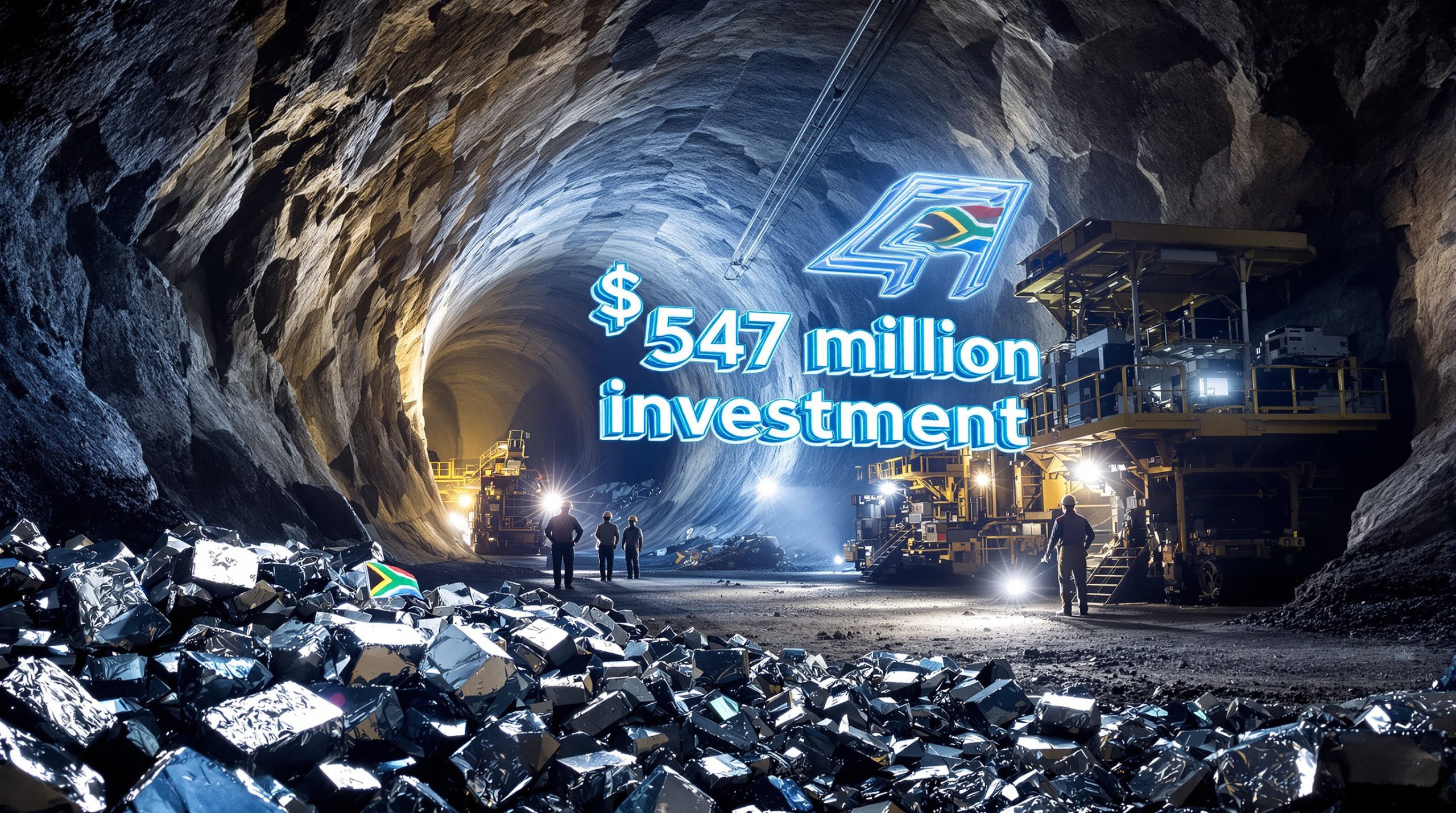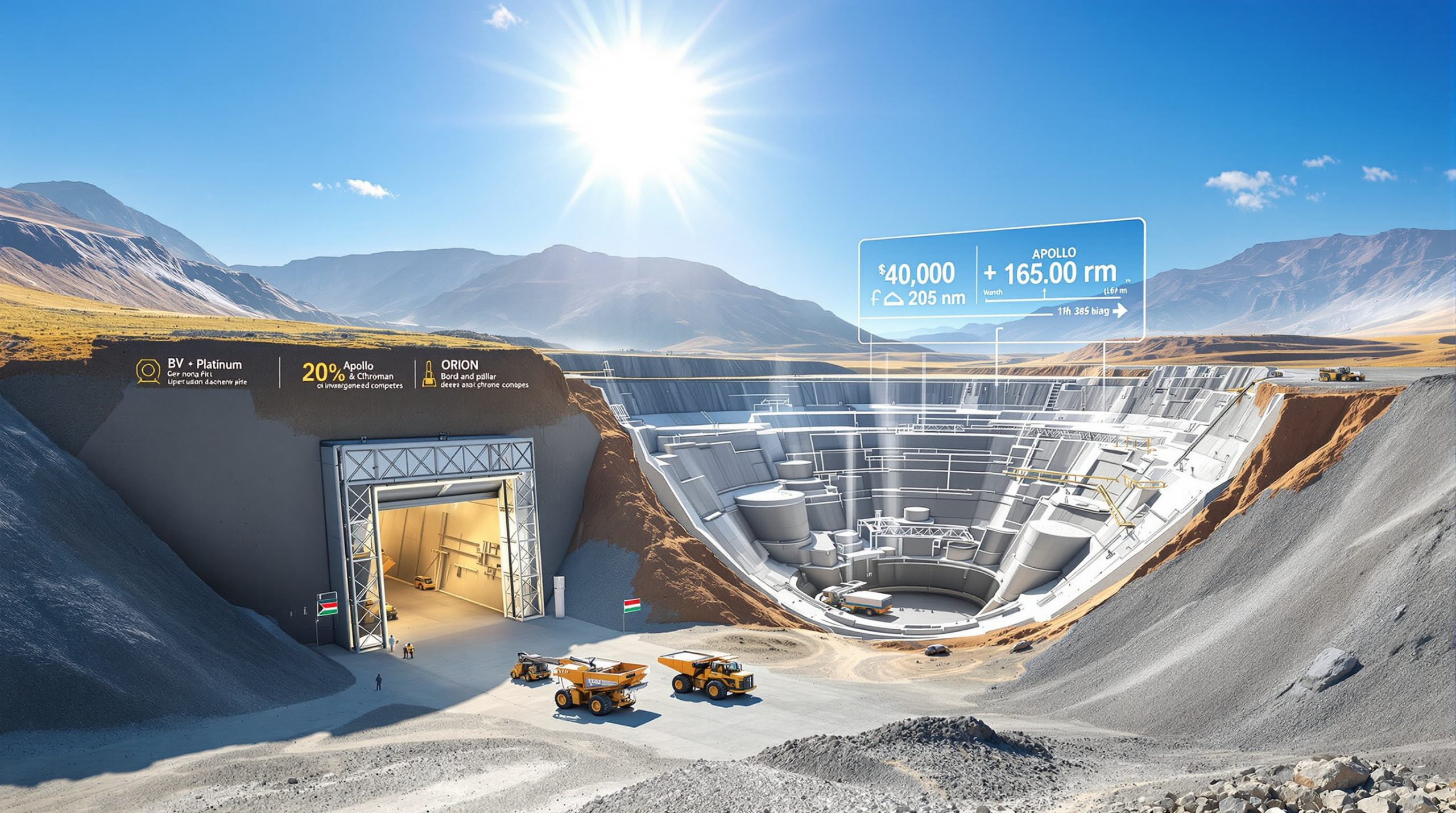Congo-Rwanda Mineral Sector Reform: A Path to Peace Through Economic Integration?
The recently developed draft framework between the Democratic Republic of Congo (DRC) and Rwanda represents a significant shift in regional mineral governance, focusing on transparency, cooperation, and economic integration. This 17-page document, following the June 2025 Washington peace agreement, establishes a comprehensive approach to reforming mineral supply chains while addressing long-standing regional tensions.
Key Framework Objectives
- Implementation of transparent mineral supply chain mechanisms
- Development of cross-border economic cooperation
- Attraction of Western investment to the mineral-rich region
- Reduction of illicit mineral trading networks
- Establishment of sovereignty recognition over natural resources
Timeline for Implementation
- Draft framework discussions: September 2025
- Expected finalization meeting: Early October 2025
- Formal signing by heads of state: Late 2025 (projected)
- Annual high-level summits: Beginning 2026
What Role Will the United States Play in the Mineral Sector Reform?
The United States has positioned itself as a key facilitator in the Congo-Rwanda mineral sector reform, building on its role in brokering the June 2025 peace agreement under the Trump executive order on minerals. According to diplomatic sources, the US involvement extends beyond mediation to include technical assistance and regulatory support aimed at transforming the regional mineral economy.
US Engagement Mechanisms
- Providing technical assistance for regulatory reforms
- Supporting third-party inspection systems for mine sites
- Facilitating international investment in regional mineral development
- Monitoring implementation of peace agreement conditions
- Coordinating with multilateral development banks for infrastructure financing
The draft framework explicitly commits both countries to work with the United States and international partners to "develop additional regulatory initiatives and reforms necessary to de-risk private sector investment in a cost-effective manner," highlighting the central role Washington plays in this process.
International Partnership Structure
- US-led coordination of technical working groups
- Multilateral bank involvement in infrastructure development
- Private sector engagement through investment facilitation
- OECD guideline implementation for transparency standards
- Donor country participation in economic integration initiatives
Western diplomatic sources have noted that this arrangement represents a significant departure from previous regional initiatives, as it provides concrete mechanisms for international oversight and coordination that were previously lacking.
How Will the Framework Address Mineral Supply Chain Transparency?
Transparency mechanisms form a cornerstone of the draft agreement, with both countries committing to significant reforms in how mineral resources are extracted, processed, and traded. The framework's emphasis on transparency reflects growing international pressure to ensure critical minerals are sourced responsibly.
Proposed Transparency Measures
- Implementation of OECD due diligence guidance across the mineral sector
- Establishment of third-party mine site inspection protocols
- Development of digital traceability systems for critical minerals
- Regular public reporting on mineral production and export figures
- Creation of regional certification mechanisms for conflict-free minerals
The draft explicitly mentions that both countries will "adopt outside transparency mechanisms, including committing to implement guidance from the Organisation for Economic Co-operation and Development," representing a significant shift toward international standards, according to recent Reuters reporting.
Critical Minerals Covered
- Tantalum: Essential for electronic capacitors
- Cobalt: Key component in lithium-ion batteries
- Copper: Fundamental to electrical infrastructure
- Lithium: Critical for energy storage technologies
- Gold: High-value mineral with significant informal sector activity
Regional experts point out that these minerals constitute the backbone of the clean energy transition, making the framework's transparency provisions critical for global supply chain security in renewable technologies.
What Economic Integration Mechanisms Are Proposed?
The draft framework outlines several economic integration mechanisms designed to transform the mineral sector while promoting regional stability. These mechanisms aim to create sustainable economic interdependence between the two countries through mineral beneficiation opportunities.
Cross-Border Economic Initiatives
- Development of special economic zones spanning both countries
- Harmonization of customs procedures for mineral exports
- Joint infrastructure development for mineral transportation
- Shared processing facilities to increase value addition
- Coordinated investment promotion strategies
The framework specifically calls for "working with private sector partners to develop cross-border special economic zones," highlighting the central role of business in the peace-building process.
Infrastructure Development Focus
- Transportation corridors connecting mining regions
- Energy infrastructure to support processing operations
- Digital connectivity for supply chain management
- Water management systems for sustainable mining
- Border facilities to streamline cross-border trade
According to the draft, these infrastructure developments will be coordinated through regular steering committee meetings and technical working groups with clear implementation timelines.
What Challenges Threaten Implementation of the Mineral Sector Reforms?
Despite the ambitious framework, significant obstacles remain that could derail implementation of the mineral sector reforms. Western diplomatic sources have expressed concerns about the timeline for implementation facing "headwinds" due to stalled security arrangements.
Security Concerns
- Ongoing presence of Rwandan troops in eastern DRC
- Continued M23 rebel control of key mining areas
- Delayed implementation of FDLR neutralization operations
- Stalled Doha process for M23 negotiations
- Persistent mineral smuggling networks
A Western diplomat cited in Reuters reporting noted that "one of the main obstacles to finalizing and signing this regional agreement is the fact that the other peace processes have stalled," adding that Rwanda has not withdrawn its troops and operations against the FDLR have not begun as scheduled.
Political Obstacles
- Congolese concerns about territorial sovereignty
- Public skepticism about Rwanda's intentions
- Domestic political opposition to cooperation
- Historical grievances related to mineral exploitation
- Upcoming electoral cycles in both countries
A Congolese official recently stated that Kinshasa "cannot consider economic cooperation with Rwanda as long as its army occupies part of our territory," highlighting the fundamental challenge of building economic ties while security issues remain unresolved.
How Does the Framework Address Sovereignty Concerns?
Sovereignty over natural resources represents a particularly sensitive aspect of Congo-Rwanda relations, with the draft framework making explicit provisions to address these concerns. These provisions are crucial given Kinshasa's view that "the plundering of its mineral wealth" is a key driver of the conflict.
Sovereignty Provisions
- Affirmation of "full, sovereign control" over natural resources
- Recognition of each country's authority over exploitation, processing, and export
- Commitment to developing in-country mineral processing capacity
- Measures to prevent armed groups from benefiting from mineral trade
- Respect for territorial integrity in economic cooperation
The outline agreed in August 2025 explicitly affirmed that each country has "full, sovereign control" over the exploitation, processing, and export of its natural resources, and recognized the importance of developing mineral processing and transformation capacity within each country.
Dispute Resolution Mechanisms
- Establishment of technical working groups for ongoing dialogue
- Regular high-level summits to address emerging issues
- Third-party mediation processes for unresolved disputes
- Joint monitoring committees for implementation challenges
- Transparency in addressing sovereignty concerns
The framework outlines coordination mechanisms including an annual high-level summit on regional economic integration and regular meetings of a steering committee and technical working groups to address emerging challenges.
What Economic Benefits Are Expected from the Mineral Sector Reform?
The economic potential of successful mineral sector reform extends beyond the immediate mining industry to broader regional development. Analysts suggest the framework could transform the mineral-rich region if security conditions improve, particularly through mineral exploration insights.
Projected Economic Impacts
- Increased formal sector employment in mining regions
- Development of downstream processing industries
- Improved tax revenue collection from formalized trade
- Reduced security costs for mining operations
- Enhanced regional competitiveness for mineral investment
The framework aims to "create a world-class industrial mining sector in the region," suggesting ambitions that go beyond simply managing existing operations to developing new capacities.
Investment Attraction Targets
- Potential for billions in new mining investments
- Expansion of existing operations in eastern DRC
- Development of processing facilities in both countries
- Infrastructure investments connecting mining regions
- Technology transfer for sustainable mining practices
The peace deal signed in Washington in June 2025 explicitly aimed to "attract billions of dollars of Western investment to a region rich in tantalum, gold, cobalt, copper, and lithium," indicating the scale of economic transformation envisioned.
How Will Local Communities Benefit from the Mineral Reforms?
The draft framework includes provisions aimed at ensuring local communities benefit from mineral sector development, addressing a historical source of grievance in the region.
Community Development Mechanisms
- Local content requirements for mining operations
- Community development agreements with mining companies
- Revenue sharing arrangements with affected communities
- Environmental protection standards for mining activities
- Skills development programs for local workforce
These mechanisms aim to ensure that mineral wealth translates into tangible benefits for communities that have historically seen few advantages from resource extraction in their territories.
Social Impact Considerations
- Reduction in conflict-related displacement
- Improved access to basic services in mining regions
- Formalization of artisanal mining activities
- Women's economic empowerment initiatives
- Youth employment opportunities in the mineral sector
By addressing these social dimensions, the framework acknowledges that sustainable peace requires addressing the economic grievances that have fueled conflict in the region, while also considering mining claims framework approaches that recognize community interests.
What Monitoring and Evaluation Systems Will Track Progress?
Implementation of the framework will require robust monitoring and evaluation systems to track progress and address emerging challenges. The draft outlines several mechanisms for ongoing oversight through CRM facility insights and similar approaches.
Governance Structures
- Steering committee with representatives from both countries
- Technical working groups focused on specific aspects of implementation
- Annual high-level summits to review progress
- Regular stakeholder consultations with civil society and private sector
- Independent third-party verification of key commitments
According to the draft, these structures will have clear timelines for meetings and reporting, ensuring regular assessment of implementation progress.
Performance Metrics
- Reduction in mineral-related conflict incidents
- Increase in formal mineral export volumes
- Growth in tax revenues from mineral sector
- Development of cross-border economic activities
- Implementation of transparency mechanisms
Western diplomatic sources emphasize that "without progress on security, the partners and even the actors themselves will find it difficult to commit to economic cooperation," highlighting the interconnected nature of security and economic metrics.
FAQ: Congo-Rwanda Mineral Sector Reform
How does this framework differ from previous mineral governance initiatives?
This framework represents the first comprehensive bilateral approach between Congo and Rwanda that explicitly links economic integration, mineral governance, and conflict resolution with significant international backing and monitoring mechanisms. Unlike previous efforts that focused primarily on certification, this approach addresses the economic drivers of conflict.
Will the framework address historical grievances related to mineral exploitation?
The framework acknowledges sovereignty concerns and aims to ensure each country benefits from its own resources while creating mechanisms for cooperation that respect territorial integrity and national control over natural resources. It explicitly affirms "full, sovereign control" over natural resources and commits to ensuring minerals trade no longer provides funding to armed groups.
How will the agreement impact artisanal miners in the region?
While details remain under discussion, the framework is expected to include formalization pathways for artisanal miners, providing them with legal status and better working conditions while integrating them into formal supply chains. This approach recognizes the importance of artisanal mining for local livelihoods while addressing concerns about informality.
What happens if security conditions deteriorate during implementation?
The draft includes provisions for regular review meetings and dispute resolution mechanisms, though economic cooperation is likely contingent on progress in security arrangements, including troop withdrawals and neutralization of armed groups. As one Western diplomat noted, without security progress, economic cooperation commitments will be difficult to maintain.
How will environmental protection be addressed in the mineral sector reforms?
Environmental standards are expected to be incorporated into the regulatory reforms, with third-party monitoring and international best practices guiding sustainable mining development across the region. The framework recognizes that environmental sustainability is crucial for long-term economic development and community well-being.
Want to Stay Ahead of Major Mineral Discoveries?
Discover how investors can capitalise on significant ASX mineral discoveries the moment they're announced with Discovery Alert's proprietary Discovery IQ model. Visit the Discovery Alert discoveries page to see historical examples of exceptional returns and begin your 30-day free trial today.




